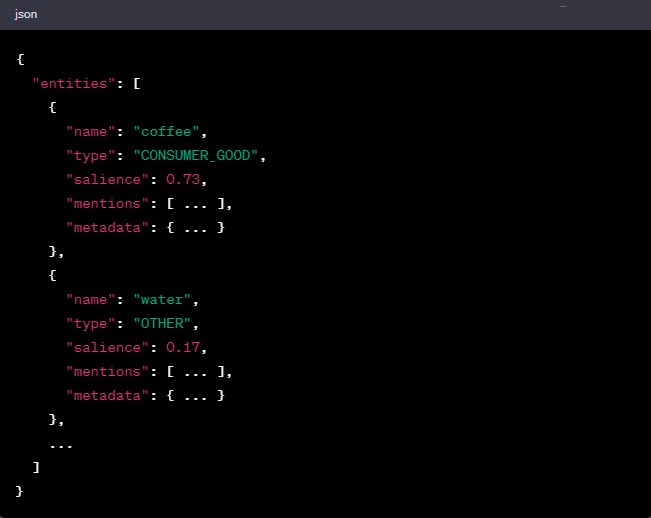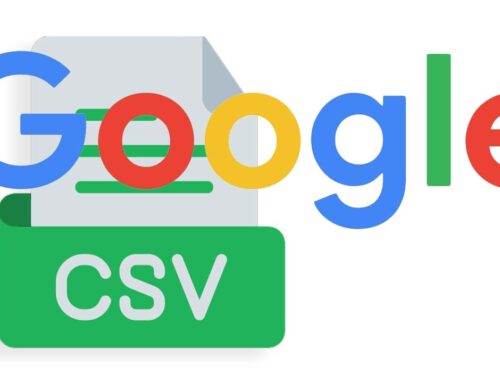Google Salience Score is a remarkable innovation in the realm of natural language processing (NLP) and search engine optimization (SEO), offering marketers, content creators, and SEO specialists a deep understanding of their content’s relevance. This comprehensive article aims to dissect and illuminate this cutting-edge concept, providing an in-depth analysis of what it is, how it works, and its potential impact on SEO strategy.
As we delve deeper into this topic, we will explore Google’s Natural Language API, which is instrumental in computing the Salience Score. Additionally, we will evaluate the relevance and importance of the Salience Score, focusing particularly on how it affects SEO practices and ultimately search engine results page (SERP) rankings. Furthermore, we’ll provide tips and strategies for leveraging this score to optimize your content, ensuring it aligns with Google’s sophisticated understanding of relevance.
Whether you are a seasoned SEO professional seeking to elevate your strategic approach or a beginner aspiring to comprehend the latest advancements in Google’s algorithm, this article serves as a comprehensive guide to understanding the Google Salience Score.
What is Google Salience Score?
Table of Contents
- Understanding Google’s Salience Score
- Google’s Natural Language API
- The Relevance of Salience Score in SEO
- Leveraging Salience Score for SEO Optimization
- Frequently Asked Questions
- Final Thoughts
- Sources
Understanding Google’s Salience Score
Google’s Salience Score is an exciting concept in the realm of NLP and SEO. In its simplest form, the Salience Score is a measure of the relevance and importance of entities within a text. This score is determined by Google’s Natural Language API, which uses machine learning to extract information and insights from text.
Definition of Salience Score
The Salience Score is a measure of the significance or prominence of an entity within a text document. An entity, as defined by Google’s Natural Language API, can be a person, organization, location, event, product, or any other type of noun. These entities can be common nouns (such as “car” or “beach”) or proper nouns (like “New York” or “John”).
The term ‘salience’ comes from cognitive psychology and linguistics and refers to the quality of being particularly noticeable or important. In the context of Google’s Natural Language API, an entity’s Salience Score quantifies its importance relative to other entities within the same document.
The Salience Score is a numerical value that ranges from 0 to 1. A score closer to 1 signifies that the entity is highly salient or important in the text, meaning it plays a significant role in the overall context or subject matter of the document. On the other hand, a score closer to 0 indicates that the entity is less central to the document’s meaning.
Understanding the Salience Score can be particularly helpful in various fields, including SEO and content creation, as it can provide insights into what a text is primarily about. This understanding can help in optimizing content, making it more likely to align with Google’s comprehension of the document’s context and relevance.
How is Salience Score Calculated?
Google’s Natural Language API calculates the Salience Score, but the exact method behind this computation remains proprietary to Google and is not publicly disclosed. However, it’s known that the calculation involves machine learning algorithms that have been trained on a massive amount of data, enabling them to analyze text in a way that closely resembles human comprehension.
Several factors contribute to an entity’s Salience Score:
- Frequency: If an entity appears frequently throughout the text, it’s likely to have a higher Salience Score. This is because repeated mention often signifies importance.
- Position: The location of an entity within the text can also affect its Salience Score. Entities appearing in prominent positions, such as the title, headings, or the beginning of paragraphs, are often considered more important.
- Relationship to Other Entities: The API also considers the relationships between entities. For example, if an entity is often mentioned in the same context as other important entities, its Salience Score may increase.
The Salience Score ranges from 0 to 1, with 1 being the most salient. This score signifies the entity’s importance within the entire document. For instance, in a document about apples, the entity “apple” is likely to have a high Salience Score, while a less central entity like “tree” might have a lower score.
However, it’s important to note that the Salience Score is not just about raw counts or simple heuristics. It’s computed based on a sophisticated analysis of the text that considers both syntactic and semantic features. This makes the Salience Score a powerful tool for understanding the primary themes and subjects of a document.
Entities and Salience Score
Entities are integral to the computation of the Salience Score. In the context of Google’s Natural Language API, an entity refers to a thing or concept that is singular, unique, well-defined, and distinguishable. This could be a person, a location, an organization, an event, or any other type of noun.
Entities can be both proper nouns (such as “Paris”, “Apple Inc.”, or “Mona Lisa”) and common nouns (like “city”, “company”, or “painting”). They can also represent abstract concepts, such as an event or idea.
Each entity identified within a text is assigned a Salience Score by Google’s Natural Language API. This score reflects the importance or relevance of the entity in relation to the overall context of the document. An entity with a high Salience Score is considered central to the text’s content and meaning.
For instance, in a text discussing the history of Apple Inc., the company “Apple Inc.” is likely to be a highly salient entity. Other entities, such as “Steve Jobs” or “iPhone”, might also have high Salience Scores, depending on their prevalence and importance in the text.
Understanding the Salience Score of entities within a text can provide valuable insights into the text’s main topics or themes. This understanding is crucial in various applications, from content analysis and information retrieval to SEO and content recommendation, as it helps determine what the text is primarily about.
Implications of Salience Score
The Salience Score has numerous implications across a range of applications, making it a powerful tool for interpreting and understanding text data. Let’s explore some of these implications:
Search Engine Optimization (SEO)
In the realm of SEO, the Salience Score can play a vital role. Understanding and optimizing the Salience Score of entities within a document can influence how search engine algorithms interpret and rank the content. The higher the Salience Score of your targeted keywords and topics (entities), the better your content aligns with Google’s perception of relevance. This can ultimately lead to improved visibility and ranking on search engine results pages (SERPs).
Content Analysis
In content analysis, the Salience Score helps determine the primary topics or themes within a text. By identifying the entities with the highest Salience Scores, analysts can understand what a document is mainly about. This can be particularly beneficial for processing large volumes of text data, where manual analysis might be impractical or impossible.
Information Retrieval
In the field of information retrieval, the Salience Score aids in retrieving the most relevant documents in response to a user’s query. By understanding the salience of different entities within a document, search systems can provide results that align closely with the user’s intent, enhancing the overall user experience.
Content Recommendation
For content recommendation systems, the Salience Score can assist in identifying and suggesting content that aligns with the user’s interests. If a user engages with content featuring certain entities with high Salience Scores, the system can recommend other content with similar salient entities.
Sentiment Analysis
The Salience Score can also contribute to more sophisticated sentiment analysis. By associating sentiment scores with salient entities, the system can better understand the positive, negative, or neutral sentiments directed towards the most relevant topics within the text.
In summary, the Salience Score is a crucial measure that helps various systems, from search engines to content recommendation systems, understand and interpret text in a more nuanced and contextual manner. By understanding the Salience Score and its implications, businesses and developers can harness the power of this tool to optimize their content and provide better services.
Google’s Natural Language API
The Google Natural Language API is a robust toolset that enables understanding of the structure and meaning of text through machine learning technology. It can analyze text in several languages, extracting valuable insights about entities, sentiment, syntax, and more. One such insight is the Salience Score, which quantifies the importance and relevance of entities within a text.
What is Google’s Natural Language API?
Google’s Natural Language API is a powerful tool developed by Google Cloud that allows developers to leverage machine learning technologies to analyze and understand unstructured text. The API uses pre-trained models to extract information about the text, making sense of its structure, meaning, and sentiment.
Here’s a breakdown of some of the key features of the Natural Language API:
- Entity Analysis: The API identifies entities within the text, such as people, places, events, and products, and provides information about those entities.
- Sentiment Analysis: The API gauges the overall sentiment expressed in the text, determining whether the sentiment is positive, negative, or neutral. It can also perform sentiment analysis on a per-entity basis, determining the sentiment towards individual entities within the text.
- Syntax Analysis: The API breaks down the text into sentences and tokens (words), providing detailed grammatical information about each token, such as its part of speech and morphological attributes. It can also identify the base form (lemma) of each word and provide a dependency parse tree to show the grammatical relationships between words.
- Entity Sentiment Analysis: Combining entity analysis and sentiment analysis, the API identifies entities in the text and determines the sentiment towards each of these entities.
- Text Classification: The API categorizes a text document into one or more predefined content categories, such as “Science”, “Health”, or “News”.
- Content Analysis: The API provides a Salience Score for each entity within the text, indicating the importance or relevance of the entity in the context of the entire document.
The Google Natural Language API is designed to be easy to use and highly flexible, making it suitable for a wide range of applications, from content recommendation and personalization to search engine optimization (SEO) and content analysis. It allows developers to process vast amounts of text data, extracting valuable insights and understanding that can drive more informed decision-making and strategy planning.
Capabilities of Google’s Natural Language API
Google’s Natural Language API is equipped with an impressive set of capabilities that provide rich, meaningful insights into text data. These capabilities are powered by Google’s machine learning technologies, allowing the API to understand text much like a human would.
Here are some key capabilities of the Natural Language API:
Entity Recognition
The API can identify entities within the text — names of people, places, organizations, products, events, and even abstract ideas or concepts. This capability extends to understanding that the same entity can be referred to in different ways. For instance, the API can recognize that “GCP”, “Google Cloud”, and “Google Cloud Platform” all refer to the same entity.
Sentiment Analysis
The API can gauge the sentiment expressed in the text. It assigns a sentiment score and a magnitude for each document or sentence. The sentiment score ranges from -1 (negative sentiment) to 1 (positive sentiment), while the magnitude indicates the overall strength of the sentiment, regardless of its positivity or negativity.
Syntax Analysis
The API performs a detailed analysis of the text’s syntax. It provides information about each word in the text, such as its part of speech (noun, verb, adjective, etc.), and identifies its base form (lemma). It can also create a parse tree showing the grammatical relationships between words.
Entity Sentiment Analysis
The API combines entity recognition with sentiment analysis to understand the sentiment towards different entities within the text. This is particularly useful for understanding public sentiment towards brands, products, or public figures in social media data or customer reviews.
Content Classification
The API can classify a document into one or more categories, out of more than 700 predefined categories. This is useful for organizing and filtering content, or for understanding the main themes or topics of a document.
Multi-language Support
The API supports a wide range of languages, making it versatile for international applications. It can analyze text in English, Spanish, French, German, Chinese, Japanese, Korean, and many other languages.
Salience Score
The API assigns a Salience Score to each entity, indicating its importance or relevance within the text. This capability is key for understanding what a document is primarily about, and can be invaluable for applications such as SEO, content recommendation, and information retrieval.
By leveraging these capabilities, developers can create a wide range of applications, from content analytics tools to customer support chatbots, that can deeply understand and intelligently respond to human language.
How Google’s Natural Language API Works
Google’s Natural Language API works by leveraging Google’s advanced machine learning technologies to understand, interpret, and derive insights from text data. The API is designed to be simple to use, providing developers with easy access to Google’s powerful language understanding capabilities.
Here is a simplified workflow of how the API operates:
- Input: The user provides the text to be analyzed as an input. This could be a string of text, the contents of a file, or the URL of a web page. The text is sent to the API as a request.
- Processing: Once the API receives the text, it processes the text using its machine learning models. These models have been trained on a vast amount of data and can perform a range of analyses, such as entity recognition, sentiment analysis, syntax analysis, and content classification.
- Output: The API returns the analysis results as a response. The response includes detailed information about the text, such as the entities identified, the sentiment of the text, the syntactic structure of the text, and the categories the text falls into. For each entity, the API also provides a Salience Score, which represents the importance or prominence of the entity within the text.
- Interpretation: The user, or the application making the request, can then interpret the results and use them for their desired application. This could involve displaying the results to a user, storing the results for later analysis, or using the results to inform some decision or action.
The Google Natural Language API is a RESTful web service, which means it uses standard HTTP methods and status codes. Requests and responses are formatted as JSON, a lightweight data-interchange format that is easy to read and write.
To use the API, you need to have a Google Cloud project and enable the Natural Language API for that project. You also need to authenticate your application to the API using an API key, a client ID, or a service account, depending on the needs of your application.
While the API is powerful, it’s also important to note that it’s not perfect. It might make mistakes, especially when dealing with ambiguous or complex language. However, Google continues to refine and improve the API, making it an increasingly valuable tool for understanding and working with text data.
The Role of the Natural Language API in Calculating Salience Score
Google’s Natural Language API plays a crucial role in the calculation of the Salience Score. The API processes the input text using machine learning algorithms, identifying entities and assigning each a Salience Score.
When the Natural Language API processes a text, it performs several analyses, one of which is entity analysis. During entity analysis, the API identifies entities within the text — these could be people, locations, organizations, products, events, and more.
After identifying these entities, the API proceeds to calculate a Salience Score for each one. This score, ranging from 0 to 1, represents the importance or prominence of that entity within the overall text. The computation of this score is a complex process that takes into account various factors, such as the entity’s frequency, its position within the text, and its relationships with other entities.
It’s important to note that the Salience Score isn’t just about counting occurrences or applying basic heuristics. The Natural Language API uses sophisticated machine learning algorithms to understand the text in a nuanced and contextual way, much like a human reader would. This allows it to calculate Salience Scores that reflect the true relevance and importance of each entity.
In addition to the Salience Score, the Natural Language API also provides other valuable information about each entity, such as its type (e.g., person, location, organization, etc.), metadata (such as the associated Wikipedia URL, if available), and a sentiment score and magnitude that indicate the overall sentiment towards the entity within the text.
By providing a Salience Score for each entity, the Natural Language API makes it possible to understand the primary topics or themes of a text at a glance. This capability has numerous applications, from search engine optimization and content recommendation to content analysis and information retrieval.
The Relevance of Salience Score in SEO
In the evolving landscape of SEO, Google’s Salience Score has emerged as an influential factor. It provides a deep understanding of content relevance, assisting search engines in interpreting and ranking web pages effectively. Let’s delve deeper into the implications of the Salience Score for SEO.
SEO and Salience Score
Search engine optimization (SEO) involves making strategic changes to a website’s content and design to improve its visibility on search engine results pages (SERPs). One of the critical aspects of SEO involves understanding and optimizing for how search engines interpret and rank content. This is where the concept of the Salience Score comes into play.
Understanding Content Through Entities
Search engines like Google aim to understand content much like a human reader would. They seek to identify the main topics or entities in a text and understand their relevance and importance in relation to the overall content. This is done using sophisticated natural language processing and machine learning algorithms, similar to those used by Google’s Natural Language API.
Significance of Salience Score in SEO
The Salience Score, as calculated by Google’s Natural Language API, represents the relevance or importance of an entity within a text. Entities with higher Salience Scores are considered to be the main topics or themes of the text.
In the context of SEO, understanding the Salience Score of different entities within your content can provide valuable insights. For instance, if your target keyword or topic has a high Salience Score, it means that it is a central theme in your content. This aligns with how search engines interpret your content, potentially leading to improved visibility and ranking on SERPs.
Keyword Optimization and Salience
The concept of keyword optimization in SEO is directly linked to the idea of Salience Score. When you optimize your content around certain keywords, you’re essentially trying to make those keywords more salient. This can involve using the keywords more frequently, placing them strategically within the text, and providing valuable and relevant information around those keywords.
Linking and Salience
In addition to keyword optimization, the Salience Score can also have implications for other SEO strategies. For example, linking strategies can be informed by the Salience Score. By linking to relevant and authoritative content that discusses the same salient entities, you can create a network of related content that can potentially enhance the salience of these entities and improve your SEO performance.
In summary, the Salience Score provides a valuable way to understand how search engines interpret your content. By understanding and optimizing for the Salience Score, you can align your SEO strategies with the way search engines understand and rank content, ultimately leading to improved visibility and ranking on SERPs.
Influence of Salience Score on SERP Rankings
The Salience Score, as determined by Google’s Natural Language API, can have a significant impact on Search Engine Results Page (SERP) rankings. While Google has not explicitly stated that Salience Score directly influences rankings, the concepts it represents align closely with known ranking factors.
Google’s Search Algorithm and Entities
At its core, Google’s search algorithm seeks to understand the content of web pages in order to deliver the most relevant results to search queries. Over the years, Google’s understanding of web content has evolved from simple keyword matching to understanding the context, including the identification and interpretation of entities – people, places, things, or ideas.
Entities and Their Importance
In the context of SEO, an entity could be a brand, a product, a person, a concept, or any other significant subject within your content. Google identifies these entities and tries to understand their context, relationships, and overall importance within the text. This is essentially what the Salience Score represents.
Salience Score and SEO Rankings
While the exact workings of Google’s ranking algorithm remain a closely guarded secret, it’s widely accepted that relevance and context are key factors. Web pages that clearly and effectively communicate their main topics or themes (the most salient entities) are likely to be considered more relevant to those topics in search queries.
For example, if a page about “Organic Farming Techniques” has a high Salience Score for the entity “Organic Farming”, it suggests to Google’s algorithms that the page provides significant content on that topic. Consequently, the page could potentially rank higher in SERPs for queries related to “Organic Farming”.
Salience Score: A Tool, Not a Direct Ranking Factor
While the Salience Score can provide valuable insights into how Google’s algorithms might interpret your content, it’s essential to note that the Salience Score itself is not a direct ranking factor. Instead, it’s a tool to understand the entities in your content and their perceived importance, enabling you to optimize your content more effectively.
By optimizing your content to clearly communicate its main entities (making those entities more salient), you align your SEO strategies with how search engines interpret and rank content, potentially improving your SERP rankings. However, it’s important to remember that numerous factors influence SERP rankings, and focusing solely on Salience Score without considering other factors could be an incomplete strategy. SEO best practices such as creating high-quality content, optimizing page load speed, mobile-friendly design, and earning high-quality backlinks should still be the primary focus of any SEO campaign.
Salience Score and User Experience
While the Salience Score provides an understanding of the importance of different entities within a text from an algorithmic perspective, it also indirectly relates to the user experience (UX). In essence, a high Salience Score for a specific entity within your content indicates that the content is primarily about that entity, which can have significant implications for how users interact with and perceive your content.
Clear and Focused Content
Content with clear and focused entities, as indicated by a high Salience Score, is typically easier to understand and navigate. If a user lands on a webpage expecting information on a particular topic (entity), and that topic is indeed the primary focus of the content (has a high Salience Score), the user is more likely to find the content useful and relevant. This can result in longer dwell times, lower bounce rates, and higher engagement – all positive signals for SEO.
Matching User Intent
The Salience Score can also provide insights into whether your content matches user intent. If the entities with the highest Salience Scores in your content match the entities users are searching for, your content is likely aligned with user intent. This alignment can lead to higher user satisfaction, driving positive user behavior signals and potentially leading to improved SEO performance.
Improved Content Organization
Understanding the salience of various entities within your content can aid in organizing your content more effectively. For instance, it can guide the creation of headings, subheadings, and meta tags that accurately reflect the content’s main themes, making it easier for users to skim and understand your content.
Personalization and Recommendation
In cases where you have a large volume of content, such as on a news website or a content-rich ecommerce site, understanding the salience of different entities can aid in personalization and recommendation. For example, if you know a user has previously engaged with content where a certain entity had a high Salience Score, you might recommend other content where that entity is salient.
While the Salience Score is an algorithmic concept, it ultimately reflects something very human: the understanding of what a text is primarily about. By considering the Salience Score, you can ensure that your content is focused and relevant, providing a positive user experience that can contribute to improved SEO performance and user satisfaction.
The Future of SEO and Salience Score
As search engines become more sophisticated in their understanding of content, concepts like the Salience Score are expected to play an increasingly significant role in search engine optimization (SEO). Here are a few ways the Salience Score could shape the future of SEO.
Greater Emphasis on Entities
With the rise of entity-based search, the focus of SEO is gradually shifting from keywords to entities. As search engines become better at understanding the context, relationships, and salience of different entities within content, SEO strategies will need to evolve to take these factors into account.
Beyond Text Content
While the Salience Score is currently calculated based on text content, the future could see it applied to other types of content as well. With advancements in image recognition, video processing, and other forms of content analysis, search engines might calculate a Salience Score for entities within non-text content, influencing the SEO of images, videos, and more.
Personalized Search and Salience Score
Personalized search could also be influenced by the Salience Score. Search engines might consider the salience of different entities within a user’s previous searches, clicks, or browsing history to deliver more personalized and relevant search results.
AI and Machine Learning in SEO
The Salience Score, calculated using advanced machine learning algorithms, exemplifies the increasing role of artificial intelligence (AI) in SEO. As AI becomes more prevalent, SEO strategies will need to adapt to take advantage of AI-driven insights like the Salience Score.
The Role of Structured Data
Structured data and schema markup can help search engines understand the entities on a webpage and their relationships. As the Salience Score becomes more influential in SEO, the use of structured data could become even more critical, helping search engines identify and understand the most salient entities within your content.
In conclusion, while the Salience Score is just one aspect of SEO, it represents a broader trend towards more sophisticated, entity-based understanding of content by search engines. As this trend continues, the Salience Score and the concepts it represents are likely to become increasingly important in the world of SEO. However, the core principles of SEO, like creating high-quality, user-focused content and providing a good user experience, will remain as vital as ever.
Leveraging Salience Score for SEO Optimization
Harnessing the power of Google’s Salience Score can significantly boost your SEO efforts. By understanding and applying the concept of salience in content creation and optimization, you can better align your content with Google’s understanding of relevance, ultimately improving your visibility and ranking on SERPs.
Understanding Your Content’s Salience Score
Assessing the Salience Score of your content can provide valuable insights into how search engines might interpret your content and can guide you in optimizing your content for better search engine visibility. Here’s how you can go about understanding your content’s Salience Score.
Using Google’s Natural Language API
The most direct way to assess the Salience Score of your content is by using Google’s Natural Language API. This API provides a variety of linguistic analysis methods, including entity analysis, which can identify entities within your content and provide a Salience Score for each one.
To use the Natural Language API, you will need to sign up for a Google Cloud account, enable the Natural Language API for your project, and then send requests to the API with the text you want to analyze.
Here’s an example of what the output might look like:

In this example, “coffee” is identified as an entity of type “CONSUMER_GOOD” with a Salience Score of 0.73, indicating that it’s a primary topic in the text. “Water”, on the other hand, has a Salience Score of 0.17, suggesting it’s less important in the context of the entire content.
Interpreting the Results
When interpreting the results, keep in mind that the Salience Score ranges from 0 to 1, with higher scores indicating greater importance. The scores are normalized and sum to 1, so a higher Salience Score for one entity means lower scores for others.
You should also consider the type of each entity, which can provide additional context. For instance, entities of type “PERSON” or “ORGANIZATION” might be particularly relevant for certain kinds of content.
Optimizing Based on Salience Score
Once you understand the Salience Scores of different entities within your content, you can use this information to guide your SEO optimization efforts. For instance, if your target keyword is represented as an entity with a low Salience Score, you might want to revise your content to make that entity more prominent.
In conclusion, while understanding your content’s Salience Score can require a bit of technical know-how, it can provide valuable insights into how search engines interpret your content and guide you in optimizing your content for better search engine visibility.
Creating Content with High Salience Score
Creating content with a high Salience Score involves focusing your content around key entities and communicating their importance clearly and effectively. Here are some strategies to help you create content with high Salience Scores.
Identify Key Entities
Before writing your content, identify the key entities you want to focus on. These could be keywords related to your industry, your brand, your products or services, or other topics relevant to your audience.
Provide Detailed Information About Each Entity
The more information you provide about each entity, the easier it is for search engine algorithms to understand their importance. Include detailed descriptions, discuss relevant attributes, and explore related topics. The deeper and more comprehensive your content, the higher the Salience Score is likely to be.
Use Entities Consistently
Consistency is key when it comes to increasing the Salience Score. If you’re discussing a particular entity, make sure to use it consistently throughout your content. Avoid switching between different terms or phrases to describe the same entity, as this can dilute its salience.
Structure Your Content Effectively
Use headings, subheadings, and other structural elements to highlight the main entities in your content. These structural cues can help search engines understand the hierarchy and importance of different entities within your content.
Use Entities in Key SEO Areas
In addition to using entities consistently within your text, you should also include them in key SEO areas like the title tag, meta description, URL, and alt text for images. This can reinforce the importance of these entities and potentially increase their Salience Score.
Link to Relevant Content
Links can also contribute to the Salience Score. By linking to other relevant content that discusses the same entities, you can create a network of related content that reinforces the salience of these entities.
Remember that while it’s beneficial to aim for a high Salience Score, it’s just as important to ensure your content is high-quality, relevant, and valuable to your audience. SEO strategies like increasing the Salience Score should always be balanced with the need to provide content that meets the needs and interests of your readers.
Optimizing Existing Content
Optimizing existing content for a higher Salience Score can help improve your content’s visibility in search engines. Here are some steps you can take to enhance your existing content based on the Salience Score.
Analyze Your Content
The first step in optimizing your existing content is to analyze it using the Google Natural Language API. This can help you understand the current Salience Score of different entities within your content, providing a baseline for your optimization efforts.
Identify Key Entities
Once you’ve analyzed your content, identify the key entities you want to focus on. These should be entities that are relevant to your content and likely to be searched for by your target audience.
Increase the Prominence of Key Entities
To increase the Salience Score of key entities, you need to increase their prominence in your content. This could involve adding more information about these entities, using them more frequently, or placing them in more prominent positions, such as in headings or near the top of the page.
Improve Content Structure
Improving the structure of your content can also help increase the Salience Score. Use headings and subheadings to highlight the main entities, break up long paragraphs to make the content easier to read, and use lists and bullet points to clearly present information.
Update SEO Elements
Don’t forget to update the SEO elements of your content. This includes the title tag, meta description, URL, and image alt text. Including your main entities in these areas can reinforce their importance and potentially increase their Salience Score.
Re-analyze and Monitor Changes
After optimizing your content, re-analyze it with the Natural Language API to see if the Salience Score has improved. Continue to monitor your content’s performance in search engine results to see if the optimization has had a positive impact.
Remember, optimizing for Salience Score should not compromise the quality or readability of your content. Your main goal should always be to provide valuable, relevant content to your readers. The Salience Score is just one tool you can use to understand how search engines might interpret your content and guide your SEO efforts.
Monitoring and Adjusting Your SEO Strategy
Monitoring and adjusting your SEO strategy based on Salience Score is a continuous process that helps ensure your content remains optimized for search engine visibility. Below are some steps to follow in this process.
Regularly Analyze Your Content
To keep track of how your SEO strategy is performing, you should regularly analyze your content using the Google Natural Language API. This can help you identify changes in the Salience Score of different entities over time and guide your ongoing optimization efforts.
Monitor Search Engine Rankings
In addition to analyzing your content, you should also monitor your content’s rankings in search engine results pages (SERPs) for relevant keywords. If your content starts to rank lower for certain keywords, it might indicate that the Salience Score for those entities has decreased.
Adjust Your Strategy Based on Results
If your analysis shows that the Salience Score for key entities has decreased, or if your content’s search engine rankings drop, you should adjust your SEO strategy. This might involve increasing the prominence of key entities, improving the structure of your content, updating SEO elements, or other optimization techniques.
Test New Approaches
SEO is a dynamic field, and what works well today might not work as well tomorrow. Therefore, you should be willing to test new approaches and strategies. For instance, you could experiment with focusing on different entities, using different content structures, or targeting new keywords.
Keep Up with SEO Trends
Finally, it’s important to stay up-to-date with the latest trends and developments in SEO. As search engines evolve, the factors that influence search engine visibility, including the Salience Score, can change. By keeping up with the latest SEO trends, you can ensure that your SEO strategy remains effective.
In conclusion, monitoring and adjusting your SEO strategy based on Salience Score is a continuous process that involves regular analysis, monitoring of search engine rankings, adjusting your strategy based on results, testing new approaches, and keeping up with SEO trends. By following these steps, you can ensure that your content remains optimized for search engine visibility and continues to reach your target audience.
Frequently Asked Questions
Final Thoughts
The Google Salience Score offers unprecedented opportunities for SEO professionals, content creators, and digital marketers to refine their strategies. By understanding and applying this advanced concept, it is possible to create content that is not only relevant and engaging but also more likely to achieve a high ranking in Google’s search results.
Sources
The information in this article is based on reliable sources, including Google’s official documentation and reputable SEO resources. Specific sources will be provided at the end of each section where applicable. For more information on Google’s Natural Language API and Salience Score, visit the Google Cloud Natural Language API documentation.











Leave A Comment